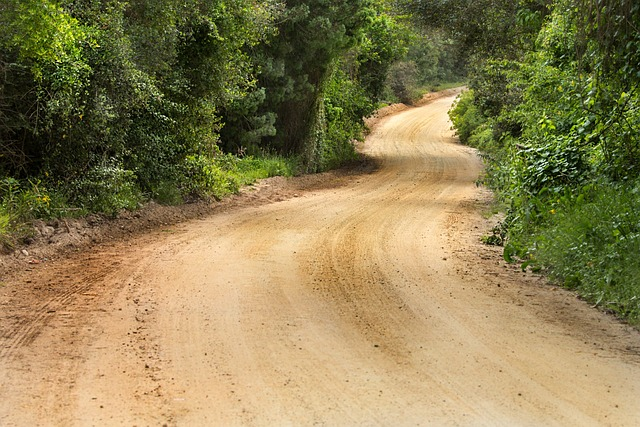The Lisbon to Faro drive is an enchanting journey through Portugal's heart.
From Lisbon's historical allure to Faro's sunlit charm, this route unfolds Portugal's varied landscapes and rich culture. Covering the drive in roughly 2.5 to 3 hours, travelers witness the scenic beauty that defines this southern European gem. This trip is ideal for those eager to explore beyond urban centers, offering stops at vineyards, beaches, and heritage sites. The journey between these two cities bridges the geographical gap and also connects the diverse experiences Portugal offers. Whether heading straight to Faro or exploring en route, this drive promises memorable moments and breathtaking views.

How Long Does It Take to Drive From Lisbon to Faro?
The drive from Lisbon to Faro covers approximately 280 kilometers (174 miles) and it takes roughly three to four hours, depending on traffic and stops along the way.
The journey offers scenic views of Portugal's coastline, charming towns, and picturesque countryside, making it an enjoyable experience for road-trippers. The duration of the drive from Lisbon to Faro primarily depends on several factors, including the chosen route, traffic conditions, and any planned stops along the way. On average, the drive takes roughly three to four hours to complete, providing ample time to soak in the sights and experiences of southern Portugal.

Factors Influencing the Duration of the Drive
The duration of the Lisbon to Faro drive depends on several factors. From my experience, the primary factors influencing the duration include the chosen route, traffic conditions, and weather. Opting for the highway can significantly reduce travel time compared to scenic routes. Weather conditions, such as rain or fog, can also affect driving speeds and visibility, impacting the overall duration of the journey.
Planning accordingly and staying informed about potential delays can help ensure a smoother and more predictable drive from Lisbon to Faro. Factors influencing the duration of the drive are route selection, traffic conditions, stops and sightseeing, recommended time frame for drive, and alternative transportation options.
Route Selection
The route taken from Lisbon to Faro can significantly impact the driving time. Opting for the most direct route via toll roads, such as the A2 motorway, typically results in a faster journey.
Alternatively, travelers may choose to take a more scenic route along coastal roads, which may take slightly longer but offers stunning views of the Atlantic Ocean and picturesque landscapes.
Traffic Conditions
Traffic congestion, particularly during peak travel times or holiday seasons, can affect the duration of the road trip.
It's advisable to check traffic updates and plan the journey accordingly to avoid potential delays.
Stops and Sightseeing
The drive from Lisbon to Faro presents numerous opportunities for exploration and discovery.
Travelers may choose to make stops at scenic viewpoints, historic towns, or charming villages along the route, extending the overall duration of the journey.
Recommended Time Frame for the Drive
While the drive from Lisbon to Faro can technically be completed in as little as three hours under ideal conditions, allowing for additional time is recommended to fully enjoy the experience.
A suggested time frame of four to five hours provides flexibility for rest breaks, sightseeing, and unexpected delays, ensuring a more relaxed and enjoyable journey.
Alternative Transportation Options
For travelers who prefer not to drive, alternative transportation options are available between Lisbon and Faro.
Train and bus services operate regularly between the two cities, offering convenient and cost-effective travel alternatives.
However, it's essential to consider that these modes of transportation may have fixed schedules and limited flexibility compared to driving.

Best Time to Take Lisbon to Faro Drive?
The best time to embark on the Lisbon to Faro drive is during the spring or fall months when the weather is pleasant, and tourist crowds are fewer. Avoiding the peak summer season ensures smoother driving conditions and easier access to attractions and accommodations along the route. From my experience, these months offer pleasant weather and fewer tourists, resulting in lighter traffic and more enjoyable driving conditions.
Avoiding the peak summer months can help avoid overcrowded roads and long travel times. Additionally, planning the road trip during weekdays rather than weekends can further minimize congestion and ensure a smoother journey. Overall, timing your Portugal road trip during the shoulder seasons provides the optimal balance of good weather and fewer crowds for a more enjoyable experience.

Factors to Consider
Factors to consider when deciding to drive to Lisbon are weather, tourist season and events and festivals.
-
Weather: Portugal enjoys a Mediterranean climate, with mild winters and hot, dry summers. The summer months, from June to August, offer long days of sunshine and ideal beach weather, making it a popular time for travelers. However, temperatures can soar during this period, especially in the Algarve region, so be prepared for heatwaves if traveling in summer.
-
Tourist Season: The peak tourist season in Portugal typically coincides with the summer months, with an influx of visitors flocking to popular destinations like the Algarve. While this time offers vibrant nightlife, bustling beaches, and lively atmosphere, it also means higher prices for accommodation and increased crowds. Traveling during the shoulder seasons of spring (April to May) and fall (September to October) allows for pleasant weather, fewer tourists, and more affordable rates.
-
Events and Festivals: Portugal hosts a variety of cultural events and festivals throughout the year, showcasing its rich heritage and traditions. Consider timing your road trip to coincide with festivals like the Fado Festival in Lisbon, the Algarve International Film Festival in Faro, or local celebrations in charming towns along the route.

Recommended Times to Take the Drive
Recommended times to take the drive are spring, fall and off peak winter months.
-
Spring (April to May): Spring is an excellent time to take the Lisbon to Faro drive, offering mild temperatures, blooming landscapes, and fewer crowds compared to the peak summer season. Travelers can enjoy exploring historic towns, gorgeous beaches, and cultural attractions without the heat and hustle of the summer months.
-
Fall (September to October): Fall is another optimal time for the road trip, with pleasant temperatures, clear skies, and vibrant autumn colors adding to the scenic beauty of the journey. Travelers can experience the harvest season, sample seasonal cuisine, and participate in local festivals while enjoying quieter beaches and attractions.
-
Off-Peak Winter Months (November to March): While the winter months may not offer long sandy beach weather, they present an opportunity for travelers to explore Portugal's cultural and historical sites without crowds. With mild temperatures and occasional rainfall, winter can be a peaceful and budget-friendly time to take the road trip, especially for those interested in off-season rates and accommodation deals.
How to Plan the Route for the Lisbon to Faro Drive?
To plan the route for the Lisbon to Faro drive you must choose the route, research points of interest, check traffic, plan stops, consider toll roads and enjoy the journey.
Planning the route for your Lisbon to Faro road trip is essential for a smooth and enjoyable journey.
Planning the route for this road trip is essential to ensure a smooth and enjoyable journey, allowing you to maximize your time exploring Portugal's diverse landscapes and charming towns along the way.

Here's a step-by-step guide to help you plan the perfect route for your Lisbon to Faro drive:
Choose Your Route
Several routes are available for traveling from Lisbon to Faro, each offering its own unique attractions and scenic vistas. Consider the following options:
-
Coastal Route: Follow the A2 motorway along the coast, offering stunning views of the Atlantic Ocean and access to nearby beaches and coastal towns.
-
Inland Route: Take the A2 motorway inland, passing through scenic countryside, historic villages, and cultural landmarks.
-
Scenic Route: Opt for smaller roads and scenic routes that wind through the countryside, providing opportunities to explore hidden gems and off-the-beaten-path destinations.
Research Points of Interest
Before setting out on your journey, research points of interest along the route to plan your stops and sightseeing activities. Some must-see attractions to consider include:
-
Arrábida Natural Park: A beautiful natural park known for its stunning beaches, hiking trails, and breathtaking views of the Atlantic Ocean.
-
Cape St. Vincent: The southwesternmost point of Portugal, offering panoramic views of the coast and the opportunity to visit the historic lighthouse.
-
Albufeira Old Town: A charming town with cobbled streets, whitewashed buildings, and a picturesque old town square.
Check Traffic and Road Conditions
Before hitting the road, check traffic and road conditions to ensure a smooth journey. Consider using navigation apps like Google Maps or Waze to monitor traffic in real-time and find the best routes.
Plan Your Stops
Plan your stops along the route for rest breaks, meals, and sightseeing. Look for scenic viewpoints, historic landmarks, and charming villages to explore along the way. Be sure to factor in time for breaks to stretch your legs, grab a snack, and enjoy the scenery.
Consider Toll Roads
Keep in mind that some routes may include toll roads, which require payment at toll booths along the way. Make sure to have cash or a payment card ready to cover toll fees.
Alternatively, you can choose to avoid toll roads and take alternative routes, although this may result in a longer journey.
Enjoy the Journey
Most importantly, remember to enjoy the journey! Take your time to soak in the sights, sounds, and flavors of Portugal as you make your way from Lisbon to Faro.
Whether you're admiring breathtaking views from coastal cliffs, sampling local cuisine in charming towns, or relaxing on sandy beaches, savor every moment of your road trip adventure.
Must-See Attractions Along the Lisbon to Faro Drive
Must-see attractions along the drive are Arrabida Park, Cape St. Vincent, Lagos old town, Ponta da Piedade, Albufeira old town, Faro old town and Ria Formosa Natural Park.
Must-see attractions along the Lisbon to Faro drive include several scenic stops and historic landmarks.
From my experience, some highlights include the coastal town of Albufeira, famed for its stunning beaches and vibrant nightlife.
Additionally, consider visiting the picturesque Arrabida Park, home to a beautifully preserved Moorish castle and winding cobblestone streets.
Finally, don't miss the opportunity to explore the Ria Formosa Natural Park near Faro, a stunning coastal wetland teeming with wildlife and natural beauty.
As you journey from Lisbon to Faro, you'll encounter a variety of must-see attractions and scenic spots.
Along this scenic journey, there are several must-see attractions that you won't want to miss.

From picturesque coastal towns to historic landmarks and stunning natural wonders, here are some highlights to include on your Lisbon to Faro drive itinerary:
Arrábida Natural Park
Located just south of Lisbon, Arrábida Natural Park is a breathtaking coastal reserve known for its stunning beaches, rugged cliffs, and crystal-clear waters.
Take a detour off the main highway to explore this pristine natural area, where you can enjoy scenic hikes, relax on secluded beaches, and marvel at panoramic views of the Atlantic Ocean.
Cape St. Vincent
As you make your way along the coast, be sure to stop at Cape St. Vincent, the southwesternmost point of Portugal and continental Europe. Here, you'll find dramatic cliffs plunging into the sea and a historic lighthouse perched on the edge of the continent.
Take in the awe-inspiring views and learn about the area's maritime history at the nearby visitor center.
Lagos Old Town
Continue your journey to Lagos, a charming coastal town with a rich history dating back to the Middle Ages. Wander through the narrow cobblestone streets of the old town, lined with whitewashed buildings, traditional shops, and inviting cafes.
Don't miss landmarks like the Church of Saint Anthony and the Governor's Castle, which offer glimpses into Lagos' storied past.
Ponta da Piedade
Just outside of Lagos, you'll find Ponta da Piedade, a stunning natural landmark known for its towering rock formations, sea caves, and turquoise waters.
Take a boat tour or hike along the coastal cliffs to experience the area's breathtaking beauty up close. Be sure to have your camera ready to capture the panoramic views of the Algarve coastline.
Albufeira Old Town
Further along the coast, make a stop in Albufeira, a picturesque town with a charming old town center. Stroll through narrow alleys lined with traditional houses, browse local shops selling handmade crafts, and relax in the town square surrounded by historic buildings.
Don't miss the opportunity to sample fresh seafood dishes at one of the town's many restaurants.
Faro Old Town
Finally, arrive in Faro, the capital of the Algarve region, and explore its historic old town. Wander through the labyrinthine streets enclosed within ancient city walls, discover hidden squares adorned with fountains and orange trees, and visit landmarks like the Cathedral of Faro and the Bone Chapel.
Be sure to take a stroll along the waterfront promenade for panoramic views of the Ria Formosa Natural Park.
Ria Formosa Natural Park
End your journey with a visit to Ria Formosa Natural Park, a protected wetland area renowned for its diverse ecosystems and abundant birdlife.
Explore the park's network of walking trails, boardwalks, and observation towers, and discover pristine beaches, salt marshes, and lagoons teeming with wildlife. Don't forget to bring your binoculars for birdwatching and your camera to capture the park's stunning landscapes.
Recommended Stops Between Lisbon & Faro
Recommended stops between Lisbon and Faro are Evora, Vila Nova de Milfontes and Sagres.
Recommended stops between Lisbon and Faro offer a mix of cultural, historical, and natural attractions.
A worthwhile stop is the medieval town of Évora, renowned for its well-preserved historic center and UNESCO World Heritage sites.
Additionally, don't miss the opportunity to explore Vila Nova de Milfontes, with its picturesque riverfront and ancient Moorish architecture.
Finally, make time for a visit to the stunning Sagres.
From historic towns to natural wonders and hidden gems, here are some must-visit destinations to include on your itinerary:
Évora
As you venture south from Lisbon, make a stop in Évora, a UNESCO World Heritage Site known for its well-preserved historic center and Roman ruins.
Explore the ancient streets lined with whitewashed buildings, visit landmarks like the Roman Temple of Évora and the Cathedral of Évora, and discover the town's rich cultural heritage at museums and art galleries.
Don't miss the opportunity to sample traditional Alentejo cuisine at local restaurants, featuring dishes like migas, açorda, and Alentejo-style pork.
Vila Nova de Milfontes
Continuing your journey along the coast, consider a detour to Vila Nova de Milfontes, a charming seaside town nestled between the Atlantic Ocean and the Mira River.
Relax on pristine beaches, explore coastal trails, and visit the historic fortress overlooking the town. Vila Nova de Milfontes also offers opportunities for outdoor activities like surfing, kayaking, and boat tours along the river estuary.
Sagres
As you approach the southwestern tip of Portugal, be sure to stop in Sagres, a historic town with a dramatic coastal landscape and maritime heritage.
Visit the imposing Sagres Fortress, which overlooks the Atlantic Ocean and offers panoramic views of the coastline. Explore the rugged cliffs of Cape St. Vincent, the southwesternmost point of Europe, and marvel at the sheer beauty of the natural surroundings.
Tips for a Smooth Lisbon to Faro Drive
To ensure a smooth and enjoyable journey, it's essential to plan ahead and be prepared for the adventure ahead.
For a smooth Lisbon to Faro drive, planning is key. From my experience, start by checking the weather and traffic conditions beforehand to avoid any unexpected delays.
Additionally, ensure your vehicle is in good condition and filled with fuel before hitting the road. Plan your route ahead of time and consider using GPS or mapping apps for navigation.
Take breaks along the way to stretch your legs stay refreshed, and always adhere to local traffic laws and speed limits. By following these tips, you can enjoy a hassle-free journey from Lisbon to Faro.
Some valuable tips to help you make the most of your Lisbon to Faro drive include planning your route, checking weather conditions packing your essentials, and scheduling regular breaks.
Plan Your Route in Advance
Before setting out on your journey, take the time to plan your route carefully. Consider factors such as toll roads, scenic detours, and points of interest along the way.
Use GPS navigation or online mapping tools to plot your course and estimate travel times. Having a clear plan in place will help minimize stress and ensure you stay on track throughout your drive.
Check Weather and Road Conditions
Keep an eye on weather forecasts and road conditions before departing on your road trip. While Portugal generally enjoys mild weather year-round, conditions can vary, especially during the winter months.
Be prepared for any potential changes in weather and road conditions, and adjust your plans accordingly.
Pack Essentials for the Journey
Make sure to pack all the essential items you'll need for the drive, including:
-
Snacks and water to stay hydrated and energized.
-
A first aid kit in case of emergencies.
-
Roadside assistance contact information.
-
A map or GPS device for navigation.
-
Sunglasses and sunscreen for sun protection.
-
Comfortable clothing and shoes for driving.
Schedule Regular Breaks
Driving long distances can be tiring, so it's essential to schedule regular breaks to rest and recharge. Plan to stop every few hours to stretch your legs, grab a snack, and take in the scenery.
Use rest areas, service stations, and scenic viewpoints along the route as opportunities to pause and relax.
Alternative Transportation Options for the Lisbon to Faro Journey
Alternative transportation options for the Lisbon to Faro journey offer flexibility and convenience.
From my experience, consider taking a train, which provides a comfortable and scenic ride with multiple departure times throughout the day.
Another option is to book a bus ticket, offering affordable fares and frequent departures between the two cities.
Additionally, renting a car or hiring a private transfer allows for a personalized and leisurely journey, with the freedom to explore various stops along the way.
Finally, domestic flights are available for those seeking a quicker travel option, although they may be more expensive than other modes of transportation.
Regardless of your choice, there are plenty of alternatives to suit your preferences for the Lisbon to Faro journey.
While a road trip from Lisbon to Faro offers the freedom to explore at your own pace, there are alternative transportation options available for travelers seeking convenience, comfort, or sustainability.
Alternative transportation options for the Lisbon to Faro journey are traveling through train, bus, flight, or car rentals.
Train
Portugal's national railway network, Comboios de Portugal (CP), operates frequent train services between Lisbon and Faro.
The journey takes roughly half an hour to three and a half hours, depending on the type of train and the number of stops along the route.
Trains depart from Lisbon's main train stations, such as Santa Apolónia and Gare do Oriente, and arrive at Faro's central train station.
Travelers can choose between regular intercity trains and faster Alfa Pendular services, which offer onboard amenities such as Wi-Fi and refreshments.
Bus
Several bus companies operate daily coach services between Lisbon and Faro, providing an affordable and convenient travel option for budget-conscious travelers.
The journey takes approximately 3.5 to 4.5 hours, depending on traffic and the number of stops.
Buses depart from Lisbon's Sete Rios bus station and arrive at Faro's central bus terminal, offering passengers the flexibility to choose from multiple departure times throughout the day.
Some bus companies also offer express services with fewer stops, reducing travel time.
Flights
For travelers seeking speed and convenience, flying from Lisbon to Faro is the fastest option. Several airlines operate regular flights between Lisbon Portela Airport (LIS) and Faro Airport (FAO), with flight durations of around 1 hour.
Flights depart multiple times daily, making it easy to find a schedule that fits your travel plans. While flying may be more expensive than other transportation options, it's ideal for those with limited time or who prefer to minimize travel time.
Rental Car
Renting a car gives travelers the freedom to explore at their own pace and make stops along the way.
Several car rental companies operate at Lisbon Portela Airport and Faro Airport, offering a wide range of vehicles to suit every budget and preference.
If your rental car comes with the Via Verde toll transponder, there is nothing you need to do extra. The tolls will be automatically charged to your credit card.
Travelers can enjoy the flexibility to customize their itinerary, take scenic detours, and explore off-the-beaten-path destinations.
However, it's essential to consider factors such as fuel costs, tolls, and parking fees when renting a car.
Conclusion
In conclusion, going on a road trip from Lisbon to Faro offers travelers the opportunity to immerse themselves in the stunning landscapes, charming towns, and rich cultural heritage of Portugal.
By renting a car from a reputable car rental company, travelers can enjoy the flexibility to customize their itinerary, make stops at gorgeous beaches and small towns along the way, and savor traditional dishes at great restaurants.
Finding a reputable car rental company is easy for the visitors.
From the picturesque Arrábida Natural Park to the historic streets of Faro's old town, each destination along the route offers its own unique charm and beauty.
Frequently Asked Questions on Lisbon to Faro Drive
1. Are toll roads common on the Lisbon to Faro route?
Yes, there are several toll roads along the route, so be prepared to pay toll fees either in cash or electronically.
2. How long does it take to reach Faro from Lisbon by public transport?
By train, the journey takes a few hours that is two hours. While by bus, it takes approximately three to four hours, depending on the service.
3. Are there any scenic beaches to visit along the Lisbon to Faro drive?
Yes, the route passes by several scenic sandy beaches, including those in Arrábida Natural Park and along the Algarve coastline.
